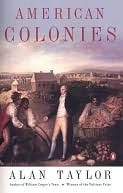More on this book
Community
Kindle Notes & Highlights
by
Alan Taylor
Read between
February 21 - March 19, 2025
The abundant land for free colonists kept wage labor scarce and expensive, which promoted the importation of unfree laborers by the thousands.
In such exchanges and composites, we find the true measure of American distinctiveness, the true foundation for the diverse America of our time. In these cultural and environmental encounters, the various peoples were not equal in power. In most (but not all) circumstances, the European colonizers possessed tremendous ecological, technological, and organizational advantages, which demanded disproportionate adjustments by the Indians in their way and the Africans in their grasp. But the colonial elites never had complete power. Instead, they constantly had to adjust to the cultural resistance,
...more
racialized sorting of peoples by skin color into white, red, and black was primarily a product, rather than a precondition, of colonization.
Unlike the French and the Spanish, the British colonies relied in war primarily on local militias of common people, rather than on professional troops. That increased the political leverage of common men as it involved them in frequent conflicts with Indians and in patrolling the slave population. In those roles, the ethnically diverse militiamen found a shared identity as white men by asserting their superiority defined against Indians and Africans conveniently cast as brutish inferiors. To avoid alienating the militiamen, British colonial elites gradually accepted a white racial solidarity
...more
American Colonies draws upon three especially productive lines of recent scholarship: an Atlantic perspective, environmental history, and the ethnohistory of colonial and native peoples. The Atlantic approach examines the complex and continuous interplay of Europe, Africa, and colonial America through the transatlantic flows of goods, people, plants, animals, capital, and ideas. Environmental history considers the transformative impact of those flows on the landscape and life of North America. And ethnohistory focuses on the cultural encounters between Africans, Europeans, and natives in
...more
Ultimately, my geographic and temporal bounds for colonial America are open-ended because process, as much as place, defines the subject as I understand it. A cascade of interacting changes make up “colonization” as the Europeans introduced new diseases, plants, animals, ideas, and peoples—which compelled dramatic, and often traumatic, adjustments by native peoples seeking to restore order to their disrupted worlds. Those processes ranged throughout the continent, affecting peoples and their environments far from the centers of colonial settlement. In turn, resourceful responses by native
...more
As in their Siberian past, the Paleo-Indians lived by hunting and gathering in small bands of about fifteen to fifty individuals: the optimum size for far-ranging travel in pursuit of animals as well as for cooperation in the hunt and butchering.
American archaeologists distinguish the peoples leading this more complex and more locally framed way of life between about nine thousand and three thousand years ago as “Archaic” to distinguish them from their “Paleo-Indian” ancestors.
Obliged to change by the potentially disastrous demise of the megafauna, native peoples innovated to develop a more efficient and productive relationship with their diverse environments.
Archaic Indians also began to modify the environment to increase the yields of plants and animals that sustained them.
Gender structured work roles: men were responsible for fishing and hunting while women harvested and prepared wild plants.
As the Archaic Indian bands proliferated and specialized in harvesting the particular local resources, they became distinguished culturally, developing different languages, rituals, mythic stories, kinship systems, and survival strategies. The native peoples of North America spoke at least 375 distinct languages by 1492.
The Indians of central Mexico pioneered the three great crops of North American horticulture: maize, squashes, and beans.
Both the Anasazi and the Hohokam manifested, to varying degrees, the influence of central Mexico, the preeminent cultural hearth of the continent.
Instead of “collapsing,” the Anasazi culture moved, shifting into impressive new pueblos to the south and east of its former homeland.
Drawing upon Mesoamerican precedents, the Mississippian peoples built substantial towns around central plazas that featured earthen pyramids topped by wooden temples that doubled as the residences of chiefs.
Belief in a transcendent God enabled educated Europeans to disenchant the world, to treat it as purely material and its animals as without souls.
The Christian alienation of spirit from nature rendered it supernaturally safe for Europeans to harvest all the resources that they wanted from nature, for they offended no spirits in doing so.
As a result, colonizers regarded as backward and impious any people, like the Indians, who left nature too little altered. By defaulting in their divine duty, such peoples forfeited their title to the earth. They could justly be conquered and dispossessed by Europeans who would exploit lands and animals to their fullest potential.
Although neither the Dutch nor the English had yet developed the mature form of capitalism characterized by industrial production and a propertyless proletariat, both nations had passed into that early stage known as mercantile capitalism.


